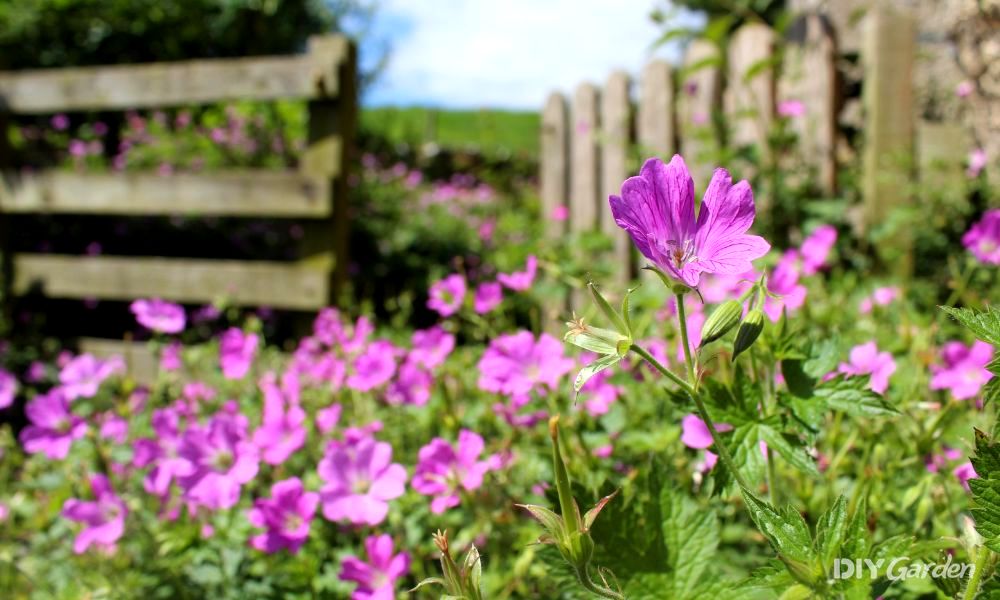
That’s more like it! Sunshine and warmer temperatures are here to light up our gardens.
Summer flowering plants are going great guns now and it’s a joy to sit outside watching the second batch of blue tits fledge.
If you can bring yourself to get off the sun-lounger, here are jobs you can do throughout July.
What To Do With Veggies In July
The main vegetable job now is watering to ensure flowers set and vegetables have enough moisture to grow. If you’re using raised beds like me watering is essential.
Here are the carrots I sowed in late May.
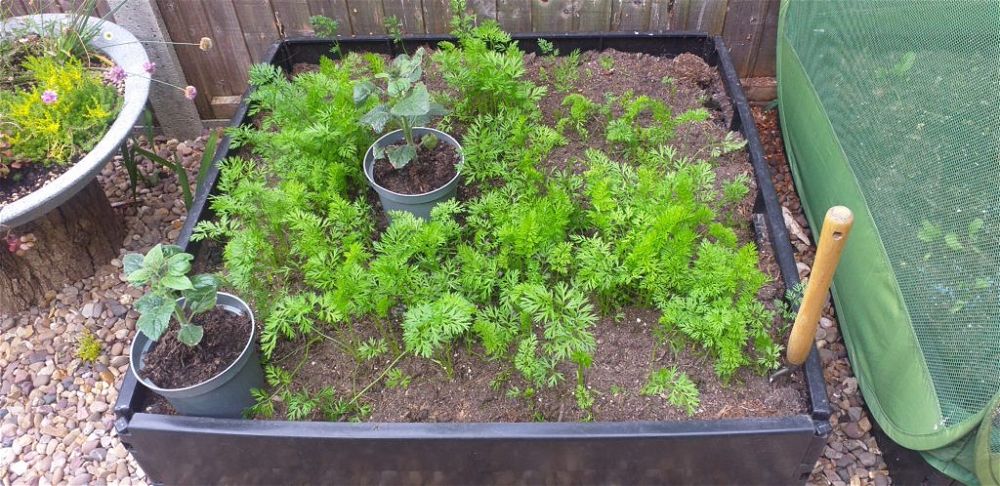
They’re growing well, but my broadcasting method leaves a lot to be desired!
I tried broadcasting rather than sowing in rows this time to try and avoid carrot fly that descends each time I thin the carottlings out. (I’m not sure that carrotlings are a real word, but I love it!). The broadcasting didn’t go very well as you can see!
If you’re growing runner beans, peas, courgettes, or marrow they need frequent water. They are all very hungry plants too, so feed them once a week. A standard tomato food from the supermarket will do the job just fine.
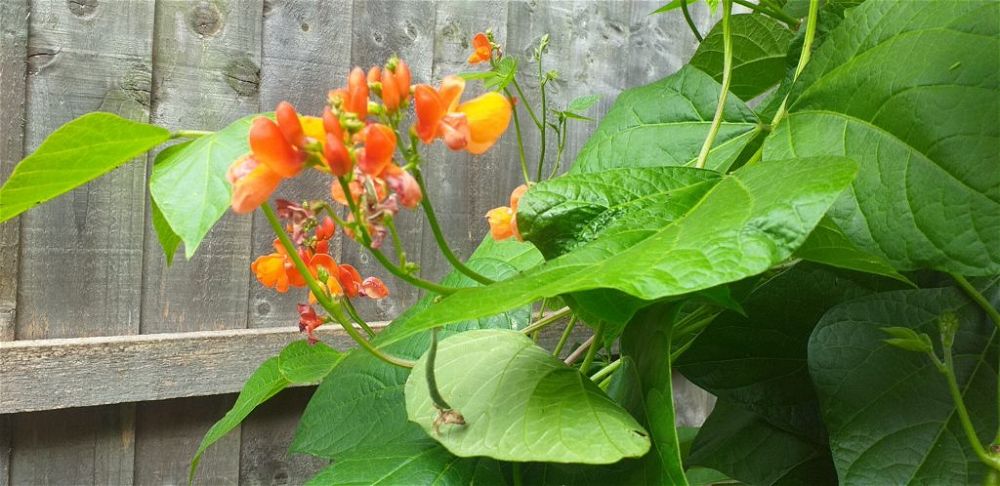
I can’t remain silent on the subject of tomatoes in July. It’s an excellent month for these tasty beauties.
They like as much sun as you can give them plus water, water, water and food! The same goes for cucumbers who will soak up everything you can give them.
Brassicas are really at risk from cabbage white butterflies in July. As lovely as butterflies are, the caterpillars are destructive.
A few hungry caterpillars can decimate a leafy green plant in just a few days. You can’t miss the holes and jagged edges they create. Net brassicas to keep the butterflies away, there’s no need to spray with insecticide.
If you’ve harvested your broad beans, cut down all their greenery for the compost heap, but leave the roots in situ. They rot down and release nitrogen back into the soil. Nitrogen is needed for healthy leaf growth, so it’ll benefit your plants for free next year.
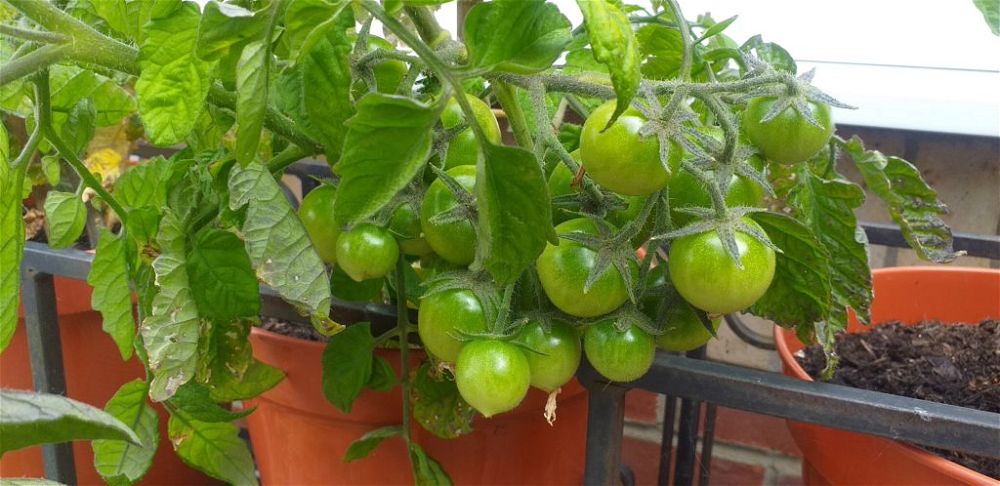
What To Do With Flowers In July
Lavender flowers in July and August. It’s a beautiful scent in the garden and bees love it.
Did you know it’s possible to dry lavender blooms for the house? Just pick a few heads and leave them on a paper towel in a cool, dry place for a week or two.
The flower heads dry out, but the wonderful scent remains. If you struggle to sleep pop them near your bed.
Another prolific July flowerer and a personal favourite of mine is Geranium Rozanne.

This hardy perennial geranium grows almost anywhere so it’s no wonder it won Chelsea’s Plant of the Centenary.
The only soil it won’t enjoy is a waterlogged spot. I’ve got it in a sun-drenched front border and a shady border with hydrangeas and it grows equally well.
Rozanne is a purple hardy geranium, but there are other shades that are just as hardy. The bees adore the flowers that last from July through to the frosts.
Frequently picking sweet peas stops them from going to seed and encourages more flowers. If you’re heading off on holiday, pick all the flowers and give them away. When you come home there will be a fresh new flush of flowers.
Roses flower best if they’re regularly dead-headed. Just snip the dead flowerheads away and they’ll be replaced with new blooms. A thick layer of mulch and a liquid weekly feed will keep them looking their best in July.
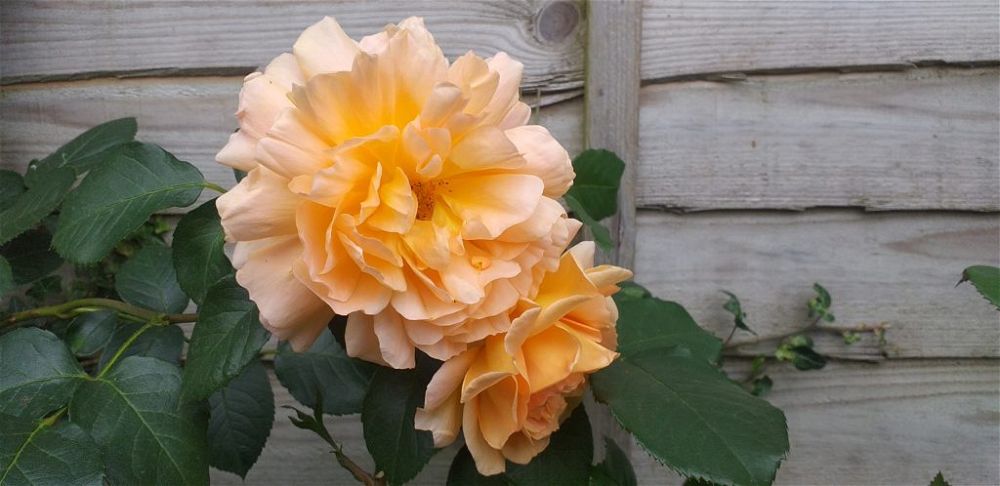
Cotinus, spiraea, pyracantha, mallow, and other softwood shrubs cuttings readily take in July.
To take a successful cutting, snip off new growth about the thickness and length of a pencil and push it into freely draining soil.
Keep watering them and you’ll see new growth in a few weeks. Taking cutting is a great way to get new plants for free, and it doesn’t matter if they fail – just try again!
Sow wallflowers, foxgloves, sweet williams, honesty, and forget-me-nots in containers now so they grow a few inches before sleeping for winter and flowering next summer. This type of flower is called a biennial.
How to Tend to Your Lawn And Hedges In July
Keep mowing the lawn, but if we’re having hot weather, it’s best to cut down on the frequency.
Leave it to grow and the blades protect roots preventing brown patches. A little longer grass doesn’t hurt anyone and it’s good for insects. If you have to mow, leave clippings to create moisture and raise up the blades.
Trim your hedges and conifers in July if they look untidy and mulch the roots of any newly planted hedges in 2021-22 to trap moisture around the young establishing roots.
How to Help Out Wildlife In July
In July, helping wildlife is all about water and shelter. Water is so important, every bird, mammal, amphibian, insect, and detritivore (that’s woodlice) need water every day. Imagine not having anything to drink for days on end.
Top up birdbaths every morning and evening. Offering a groundwater bowl is the best all-round if you can only have one. Pedestal bird baths are pretty and small garden birds love them, but mammals and amphibians can’t climb up for a drink.
Hedgerows and flowers borders buzzing with life in July. It’s prime time for bees, hoverflies, and butterflies. Encourage them in with shallow bowls of water and plenty of nectar-rich flowers. Hoverflies particularly like achillea and ox-eye daisies.
Not everyone likes them, but bats are easy to spot now. Look outside at dusk and you might spot the most common species, the pipistrelle, swooping around your eaves to catch juicy moths.
If you don’t have any at home, take a trip out to a church or a barn at dusk and no doubt you’ll see them.
Have you ever spotted a lizard in the UK? Now is the time to see them basking on rocks and chalky soils. They generally live in the UK’s south in heathland but do turn up in gardens too.
Another basking visitor to ponds in the grass snake. Yes, it can be terrifying to see a snake in your garden, but they are harmless, they don’t bite, constrict or attack pets.
Grass snakes are only out to hunt tadpoles and frogs. They like damp grass, ponds edges, and leaf litter coming out to bask in the sunshine when it’s hot.
Another impressive sight in July and August is swarming black ants. Flying ants are usually males leaving the nest. The first signs are swooping starlings and house martins who love to eat them.
If ants swarm in your garden, go indoors to watch, and please don’t put boiling water on them. Scalding ants is totally unnecessary, they’re in the process of leaving so just wave them off.
July is the last time to see swifts before their August migrations. Swifts look much like swallows and house martins in the air. They eat and drink ‘on the wing’ and are called swifts because of their astonishing speed.
Swifts can’t hunt in rainy weather, so they fly around a storm. They’re the only bird in the UK that does so!
How to Deal with Garden Pests In July
Aphids, greenflies, black flies, and all other types of sap-sucking parasites are active in July.
They cause leaf distortion and leave honeydew (that’s their delightfully named poo!) on plants which leads to mold and fungus. Blackfly especially enjoys broad beans and runner beans in summer.
The best way to get rid of them is manually rubbing them away. Use gardening gloves or washing up gloves with a bowl of soapy water. Another good method is relocating ladybirds and lacewings to the infestation. They love to eat aphids and don’t harm your plants at all.
We’ve already talked about cabbage white butterflies wreaking havoc on brassicas, but another pretty unwelcome visitor around now is the lily beetle.
Lily beetles are bright red and they cause devasting damage to fritillaries and lilies. They are gradually gathering pace and spreading across the UK. The best way to get rid of them is a white sheet spread around the base of the container. Give it a shake, and lily beetles rain off Put them on the bird table or in the hedgehog house.
Tending to Patios, Decks, and Garden Furniture In July
It’s a good time to get those garden building jobs underway. Building a patio, deck, BBQ, or entertaining area is so much more pleasant in the sunshine!
It’s also a good time to jet wash your deck or patio and apply a coat of liquid that prevents mold and algae from growing there. They’ve saved me hours.
Enjoy A Beautiful July!
We’re properly into summer now and it’s so lovely to enjoy the warmth.
Your garden will respond to the heat and extra-long hours of light, so try to do a little job every day to keep it under control.
